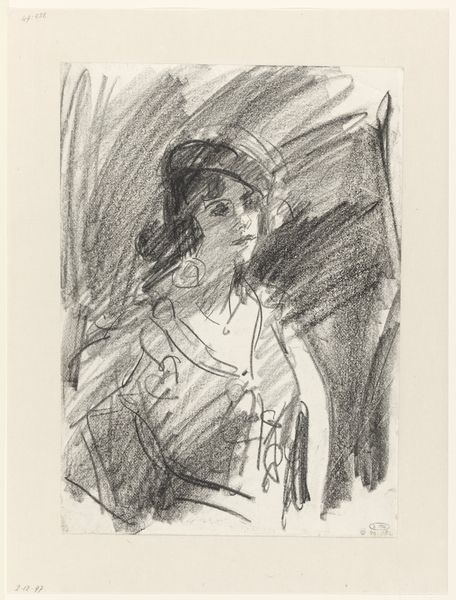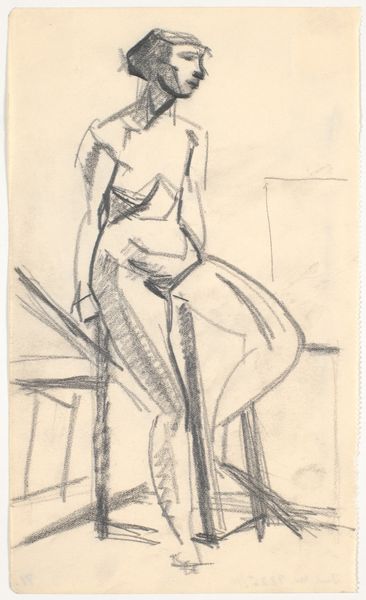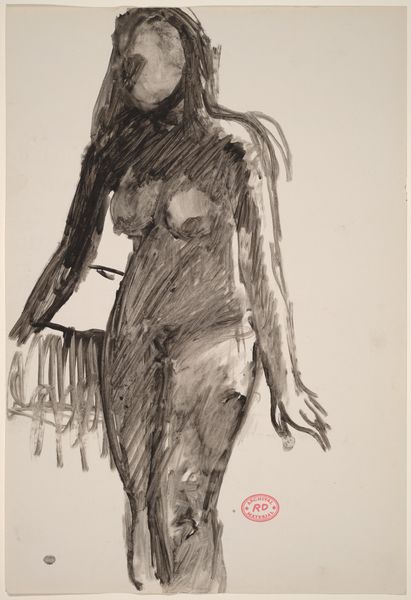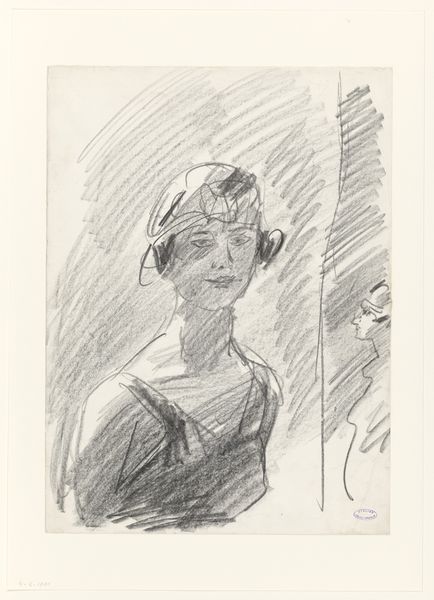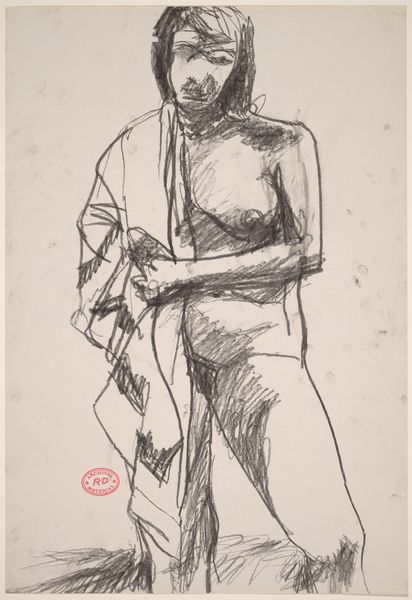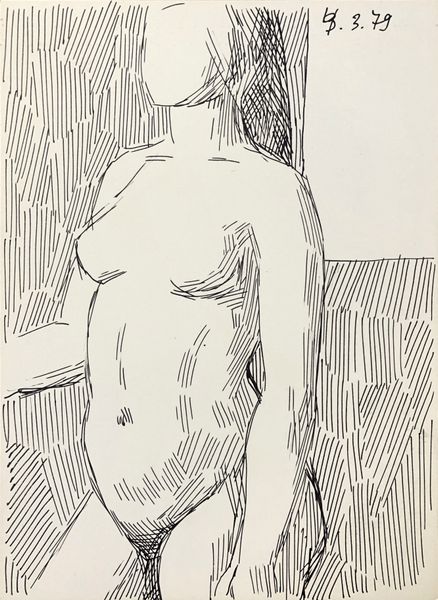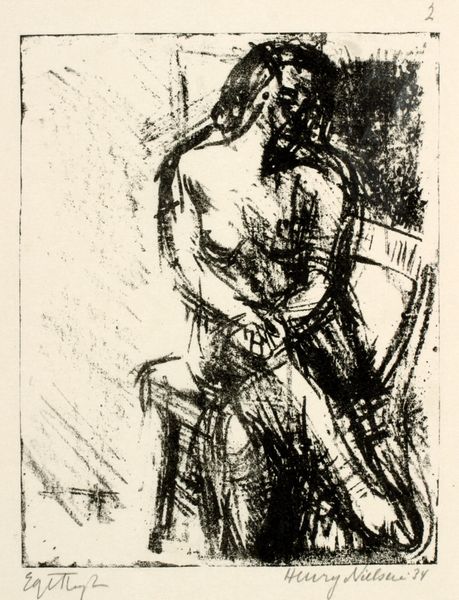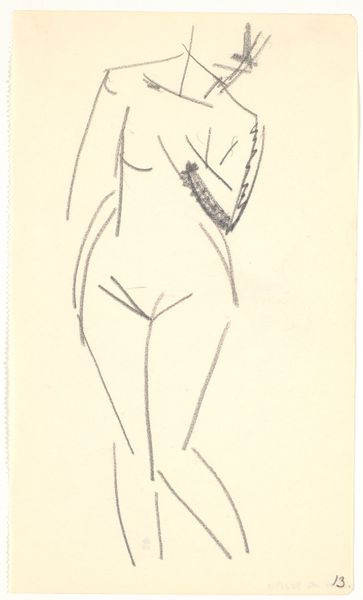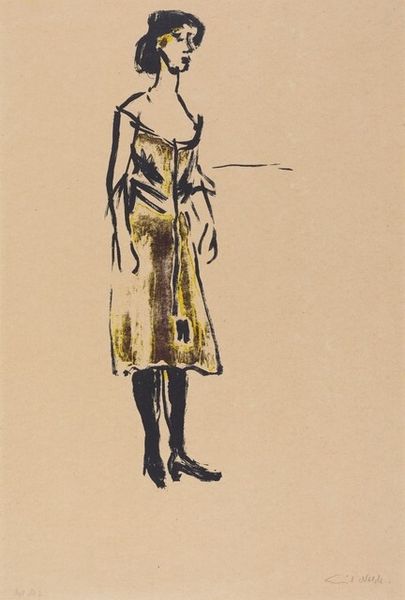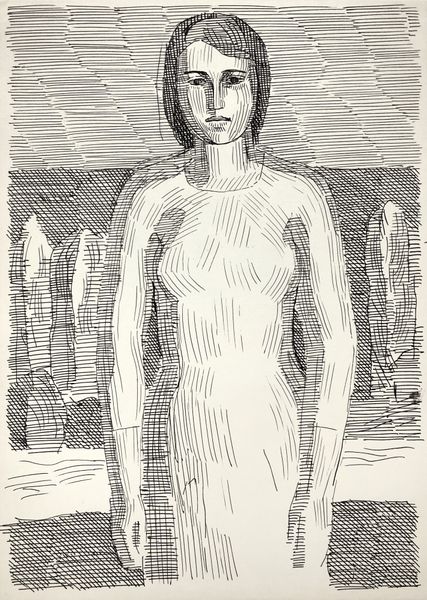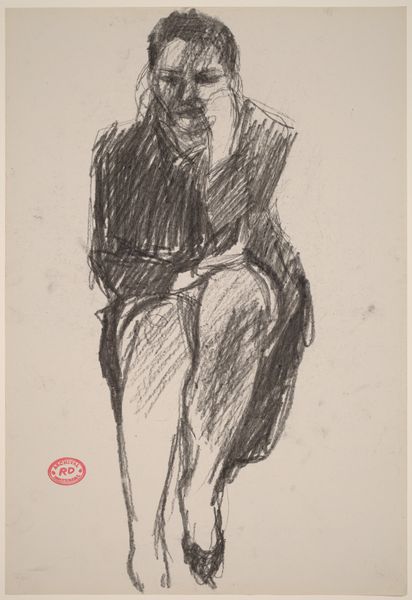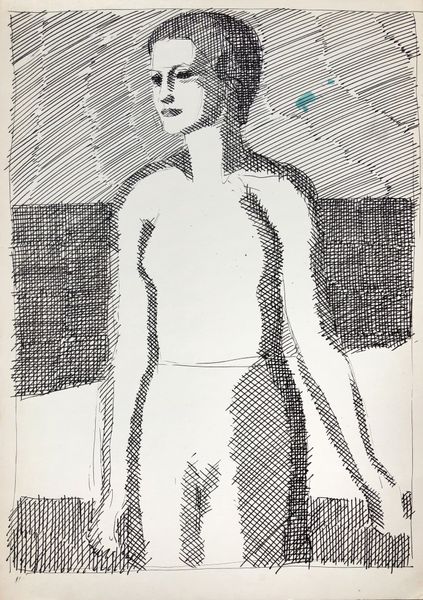
Poplar (Illustration to Taras Shevchenko's poem Poplar?) 1958
hryhoriihavrylenko
Private Collection
drawing, ink
drawing
pen sketch
pencil sketch
figuration
ink
pen-ink sketch
line
sketchbook drawing
history-painting
realism
Copyright: Hryhorii Havrylenko,Fair Use
Curator: This ink drawing from 1958 is titled "Poplar (Illustration to Taras Shevchenko's poem Poplar?)" by Hryhorii Havrylenko. It depicts a lone figure of a woman rendered with swift, expressive lines. What's your first take on it? Editor: It strikes me as quite somber. The harshness of the ink and the exposed, bare feet give a sense of vulnerability but it has also movement—the lines evoke the way her dress and the wind pull at the landscape. What is its reference to Poplar and Shevchenko about? Curator: Taras Shevchenko was a 19th-century Ukrainian poet and a national hero, known for his poetry advocating for national and social liberation. The poem "Poplar" tells the story of a woman who transforms into a tree due to longing and despair, often interpreted as an allegory for the suffering of Ukraine and its people. Given Havrylenko's background, engaging with Ukrainian themes from a diasporic vantage point in the Soviet era adds an essential layer of defiance and cultural resilience to understanding this work. Editor: That completely transforms how I read it. Now I see the dark lines not only as a compositional technique but symbolic of a weight—it is a physical rendering of the cultural and historical context from which she stems. The bare feet, no longer simply “bare," suggest a direct connection to the earth, a sort of rootedness that aligns with that symbolic transformation you just mentioned. Curator: Exactly, and notice how the stark contrasts emphasize the themes of sorrow and resilience—themes prevalent in Shevchenko's poem, which mirrors the sociopolitical realities facing Ukrainians under Soviet rule. The rough execution of the work, down to visible imperfections in the lines and hatching, give insight into a wider world of forced collectivism. Editor: And knowing it is just ink and paper too, further informs its significance, in that the simplest, most available materials have been harnessed to give way to an immense history, suffering, and finally resilience, as you've called it. Curator: Indeed. It exemplifies how a seemingly simple drawing can serve as a powerful intersectional narrative connecting history, identity, and resistance. Editor: Looking at it again with this context in mind, I appreciate even more how such delicate material could convey such power. It underscores how art, at its best, bears witness and creates a pathway to empathy and understanding across generations.
Comments
No comments
Be the first to comment and join the conversation on the ultimate creative platform.

